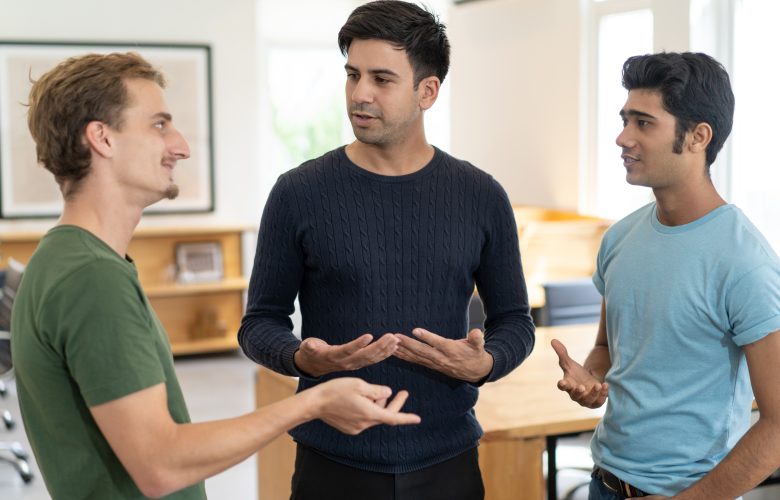Table of Contents
Key takeaways
- Stylish outfits suggest thoughtfulness and a desire to impress
- A laid-back choice implies a need to feel comfortable
A carefully styled look, like a tailored jacket, statement dress, or polished shoes, suggests thoughtfulness and a desire to impress, while a more casual, laid-back choice could imply comfort, authenticity, or even lack of effort. Colors, too, tell their own story: red may hint at passion and boldness, black at sophistication, and softer tones at approachability and warmth.
Black is associated with sophistication and elegance, and someone who chooses to wear it on a first date might want to be perceived as more powerful and more intelligent. It’s the go-to option for a more formal date. Long-wavelength colors like red, yellow, and orange are suitable for more casual settings. They make people feel more energetic and often contribute to a perception of confidence, vigor, and enthusiasm. Numerous studies show that men see women in red as more attractive, and this color’s effect is similar in male non-human primates.
The role of body language
People who are capable of decoding body language are capable of gaining useful insight into what a potential partner is trying to communicate. If your date’s shoulders are back and their feet point towards you, it signals attentiveness and openness. Leaning in communicates engagement and interest, while crossed legs or arms can indicate boredom or discomfort.
People are either huggers or hand-shakers. A handshake can be a sign of shyness or friend-zoning, while hugging signals they might find you attractive – willingness to initiate physical contact often does. Hiding your lips expresses a slew of negative emotions: sadness, anger, anxiety, etc.
Understanding body language is especially important on first dates, as research in psychology suggests that over 55% of first impressions are based on non-verbal communication. Eye contact, for instance, is another powerful signal: steady but natural eye contact conveys interest, whereas avoiding it can create a sense of disconnection. Even subtle actions like mirroring your date’s gestures can show subconscious alignment and compatibility.
First-date outfit ideas for men and women in 2025
Minidresses are popular for summer dates in 2025, but shift dresses, not skin-tight ones. You want to show some skin, but also leave something to the imagination. If dresses aren’t your thing, a pastel-colored top, maybe trimmed with lace, and regular jeans are a sexy pairing that doesn’t make it look like you’re trying too hard, which is ideal for a first date.
For men, dark denim naturally appears more elegant than lighter denim, even when worn casually. Finish a crisp white shirt and a light suede jacket off with a slightly faded-looking pair of leather boots. Alternatively, opt for a five-pocket pant in black, gray, or navy with a black T-shirt and black or grey suede sneakers.
Beyond specific choices, accessories matter as well. For women, minimalist jewelry like gold hoops or a delicate chain adds polish without overwhelming the look. Men can benefit from a sleek watch or leather belt that ties the outfit together. Small details can show you’ve thought about presentation while still keeping comfort intact.
Why do people dress as they do?
The theory of enclothed cognition posits that the clothes we wear impact how we feel about ourselves. According to fashion psychologists, there are three main reasons people dress as they do: for utility, to make themselves feel better, and to communicate how they feel to others. Many people want to look confident on first dates, as research has confirmed that confidence is rated as a highly attractive trait in a potential partner. Scientists have even established a link between confidence and accuracy (Psychology Today).
This is why what you choose to wear is not just about impressing your date but also about shaping your own mindset. A well-chosen outfit can help reduce nerves, increase self-assurance, and even affect posture and tone of voice. Looking confident often translates into behaving confidently, which makes the first meeting smoother and more engaging.
Fake it till you make it
Trying to appear confident will eventually lead to real confidence, and what’s more, there is a link between confidence and happiness. Prof. Roy Baumeister’s paper on the connection between self-esteem and life satisfaction quotes a study of 31,000 college students from 31 countries, according to which high self-esteem was the most essential predictor of overall life satisfaction, and there was a 47% link between happiness and confidence, evidencing a very strong positive relationship.
In dating psychology, this means that showing up well-dressed and composed can create a feedback loop: your date sees you as confident, you feel validated, and that validation makes you genuinely more confident. Even if it begins as an act, over time, that act becomes reality.
Conclusion
Clothing and body language are more than surface-level decisions—they create the foundation of a first impression. Whether it’s the confidence sparked by a tailored jacket, the warmth conveyed by pastels, or the attraction stirred by bold red, every choice communicates something important. Combined with open body language and small signals of attentiveness, your appearance becomes a powerful tool in shaping how the date unfolds.
First dates are moments of discovery, and while authenticity should always come first, taking time to choose an outfit that reflects your personality and boosts your confidence can set the right tone. The hidden language of style, color, and non-verbal cues ensures you’re not just seen, but truly understood. For more insights on confidence and self-presentation, explore related lifestyle and dating guides on our site.
Recap
- The choice of attire and body language provide key information about personality
- Black indicates sophistication; pastels are associated with approachability
- Red, orange, and yellow reveal vigor and energy
- Body language such as leaning in or mirroring shows interest and openness
- Outfits influence not only how others see you but also how you feel about yourself

